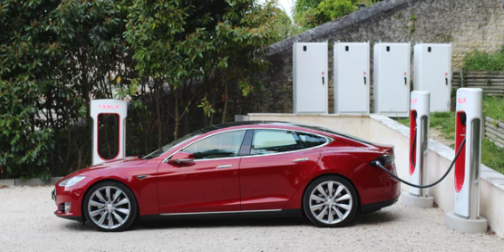http://2.bp.blogspot.com/-Obu7DMDUq90/WbdbLtpu1XI/AAAAAAAACTY/hc3BaMHDtccOORCMGkVLkN2FJZkEFgELgCK4BGAYYCw/s1600/How%2Bdid%2BTesla%2Bmake%2Bsome%2Bof%2Bits%2Bcars%2Btravel%2Bfurther%2Bduring%2BHurricane%2BIrma.png

Tesla drivers who fled Hurricane Irma last weekend received an unexpected lesson in modern consumer economics along the way. As they sat on choked highways, some of the electric-car giant’s more keenly priced models suddenly gained an extra 30 or so miles in range thanks to a silent free upgrade.
The move, confirmed by Tesla, followed the request of one Florida driver for a limit on his car’s battery to be lifted. Tesla’s cheaper models, introduced last year, have the same 75KwH battery as its more costly cars, but software limits it to 80% of range. Owners can otherwise buy an upgrade for several thousands of dollars. And because Teslas software updates are online, the company can make the changes with the flick of a virtual switch.
It is, points out economist Alex Tabarrok, an example of price discrimination – in this case, the art of selling superficially worse versions of the same or similar product for less. And it is nothing new. “The only thing that has changed is that companies can now change the offering during the life cycle of the product,” says Dr Georg Tacke, a consumer pricing expert and the chief executive of global consultancy Simon Kucher. “As more software gets into our hardware, the more we are going to see this.”
In Damaged Goods, a paper on the subject published by MIT in 1996, economists Raymond Deneckere and Preston McAfee showed how limiting products to make them cheaper can even cost a company more in the short term. In 1990, IBM launched LaserPrinter E, a cheaper version of its LaserPrinter. The only difference? A chip modification that slowed the printing speed to five rather than 10 pages per minute.
But, as Tacke explains, manufacturing two genuinely different versions of a product costs a lot more. The challenge is to predict the willingness to pay of customers while making them feel as if they have benefited from value – or better features. “If you have one product and the price is too high, people don’t buy it. But if it’s too low, you don’t exploit some customers’ willingness to pay,” he says. “So you differentiate and, yes, that means damaging the product in some way.”
This is why there is now also a market for “remapping” modern cars: tweaking their software to unleash hidden performance – like a video game cheat – without touching the engines. Mobile phone and household appliance makers use similar marketing ploys to differentiate products – and sell more overall.
But should we feel cheated by this sleight of hand? “Get used to it,” says Tacke. The key to pulling it off, he adds, is to manage expectations and to do the research to get the prices right. Tesla customers driving the cheaper cars knew what the payoff was. And the company had the last laugh; it no longer offers cheaper cars with the “damaged” battery, because most people bought the upgrade anyway.
guardian.co.uk © Guardian News & Media Limited 2010
Published via the Guardian News Feed plugin for WordPress.
How did Tesla make some of its cars travel further during Hurricane Irma?https://goo.gl/3PzD66











0 comments:
Post a Comment